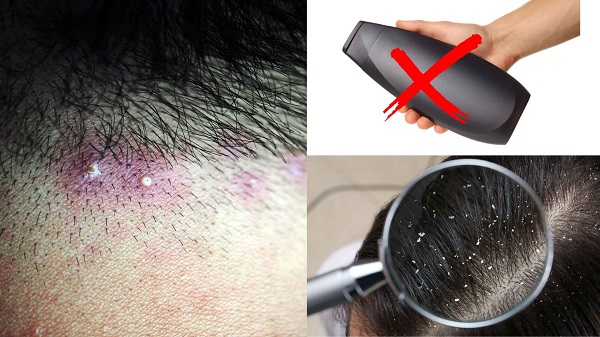
What are scalp acne?
Scalp acne is a small, rough spot that is often hidden under the hair, causing itching or burning sensation when touched. They may not be easy to see with the naked eye, but they cause obvious discomfort, especially when washing or brushing hair.
Like acne on the face, acne on the scalp can also become swollen, inflamed and spread if not properly cared for.
Causes of scalp acne
- Bacteritis, fungal or Contaminated hair follicles
Baria cystitis is the most common cause of acne on the scalp. Dust, sweat, bacteria and fungi can build up in the hair roots, clog hair follicles and cause inflammation. This condition is common in people who often travel outdoors or live in polluted environments.
- Strong goosebumps and oil glands
People with dandruff are often accompanied by active seborrheic gland, increasing the risk of scalp acne. Excess oil can easily clog pores, making it an ideal condition for bacteria to grow.
- Unhealthy lifestyle and diet
Stress, hormonal changes, eating too much fat or lack of nutrients can all cause acne to flare up, not only on the face but also on the scalp.
- Using the wrong hair care products
Some hair spaces, ointments or pomades contain oils that easily block hair roots. When the product is not completely washed, excess waste will accumulate, causing acne.
- Hair is too oily
Oily hair and scalp are an ideal environment for acne to grow. Not washing your hair regularly or cleaning properly can cause excess oil and bacteria on the scalp, thereby causing acne.
How to safely treat itchy acne on the scalp
- Do not tu nhienly mold acne, as it can spread bacteria, making acne more severe, even leaving scars or causing hair loss.
Keep your scalp clean. Wash your hair regularly with a gentle shampoo, avoid scratching when itchy.
- Limit the use of oil-based products.
- Building a healthy diet and getting enough sleep.





